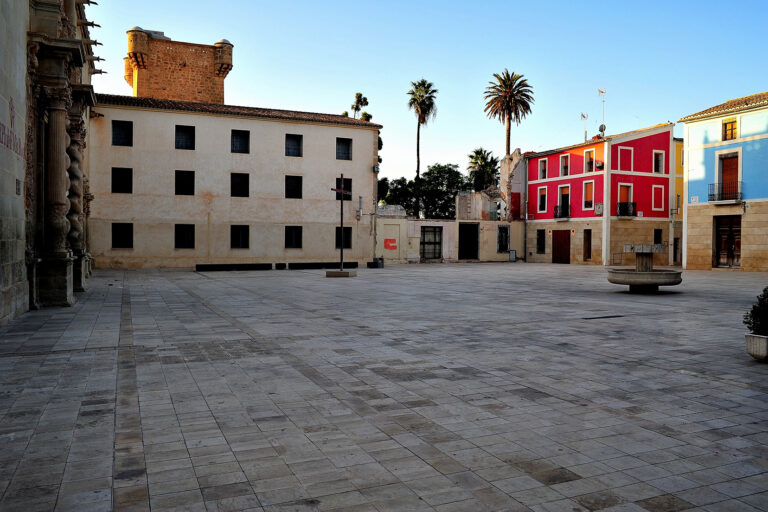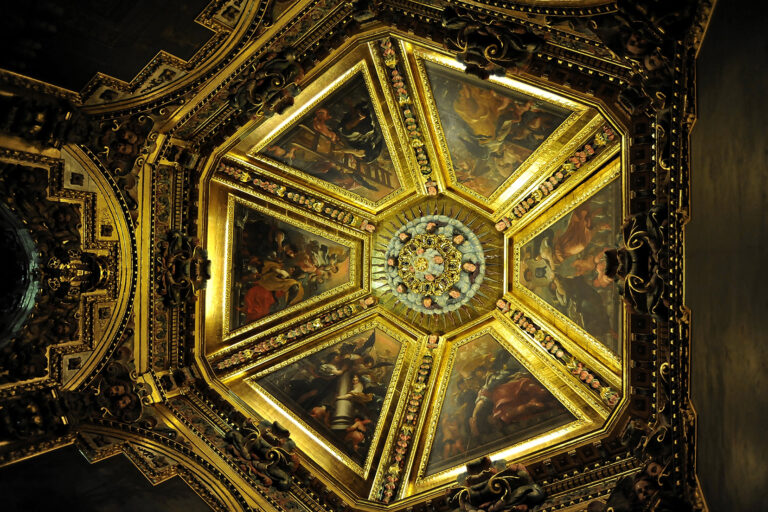Monastery of the Holy Face
The Santa Faz monastery is located in the heart of the district of Santa Faz, which is located between the municipalities of Sant Joan and Alicante. Although the convent belongs administratively to Alicante, it is framed in the jurisdiction of the parish of Sant Joan and closely linked to our town. The first monastery was built at the end of the 15th century, but the current configuration dates back to the 18th century, thanks to the work of the Baroque-style architects Mr. Fray Francisco Cabezas and Mr. José Terol.
According to tradition, the relic of the Holy Face arrived at Sant Joan, from Rome, by the hand of Mosén Pedro Mena. On Camino de Lloixa, while a prayer was taking place to pray for rain to mitigate the drought, the relic began to cry. The authenticity of the tears was verified by the gentleman Mr. Guillem Pascual. After the event the rains came and with them the recognition of the miracle. Later, Mr. Guillem Pascual himself would give up the land where the sanctuary was located in memory of the event.
In 1518 the custody of the temple was entrusted to the Coletine Poor Clare sisters of Gandía. Next to the monastery, two defensive towers were built to protect the nuns and inhabitants of the small hamlet. One of them, the Santa Faz tower, is still preserved today. In 1590 the old Renaissance altarpiece was built, with images of Franciscan saints, Veronica and Saint John the Baptist among others, as well as scenes of miracles of the Holy Face.

Santa Faz Square (Alicante)
In the 17th century, the Alicante City Council decided to build a dressing room to house the relic of the Holy Face. The artists Mr. Pere Joan Valero, Mr. Juan Conchillos and Mr. José Vilanova participated in this work. The architectural and decorative distribution follows the cosmological representation of the Passion, presenting divine and human events using the figures of the circle, unity, eternity and infinity of God, and the triangle, the trinitarian essence of God. According to Hernández Guardiola, it is one of the most valuable works of the Hispanic Baroque.

Holy Face
The religious complex that we see today is a construction with a Latin cross plan crowned by a blue glazed tile dome, a typical solution of the Valencian baroque. The façade of the church stands out, the only three-body church in the diocese of Orihuela-Alicante in which a representation of the miracle of the Three Faces of the Holy Face appears on the tympanum, while the shield appears on the second body. of the city, finishing off the complex with a niche with the image of Saint Francis of Assisi.
During the Civil War, the monastery was attacked and many of its objects and images were destroyed. The Santa Faz and the dressing room were saved thanks to the intervention of some neighbors such as Mr. Antonio Santamaría and Mr. Vicente Rocamora. Throughout the war, the relic was kept in the Provincial Council, returning to worship after three years at the Villa Marco Estate, where it was secretly taken to celebrate a religious event and be venerated for a few hours. Currently, the monastery is in an excellent state of conservation and is being declared an Asset of Cultural Interest.

















Did you know that…?
The authenticity of the relic and its miraculous events has been much debated and studied since the 15th century. In 1525 the Holy See approved the miracles of the Holy Face and the Proper Prayer, granting it worship. However, from the 17th century and during the 18th century with the rise of the Enlightenment, the well-known Illustrated Dispute of the Holy Face took place. Among those who debated the Holy Face were Mr. Gregorio Mayans and Dean Martí.
The Holy Face has been a pilgrim relic in the city of Alicante and La Huerta throughout the centuries on the occasion of epidemics, wars or celebrations. Transfers to Sant Joan have been confirmed on several occasions. Among the most recent are those for the 4th centenary in 1889, one in 1913 due to the drought or the one carried out in 1989 on the occasion of the 5th Centenary, an anniversary in which it was also taken to Benimagrell and Mutxamel. The last time La Santa Faz visited the church of San Juan Bautista was in 2014, on the occasion of the 525th anniversary of the miracle of the Tear.
The Santa Faz pilgrimage has been celebrated annually since the 16th century, between the city of Alicante and the hamlet. Initially, this event took place on March 17, but in the 18th century it was definitively moved to the second Thursday of Easter, a day on which it is still celebrated. In the last decade, the event has become a key date for teenagers and university students, who take advantage of the pilgrimage to celebrate the last big party on the calendar, before the closing that precedes the final exams.
